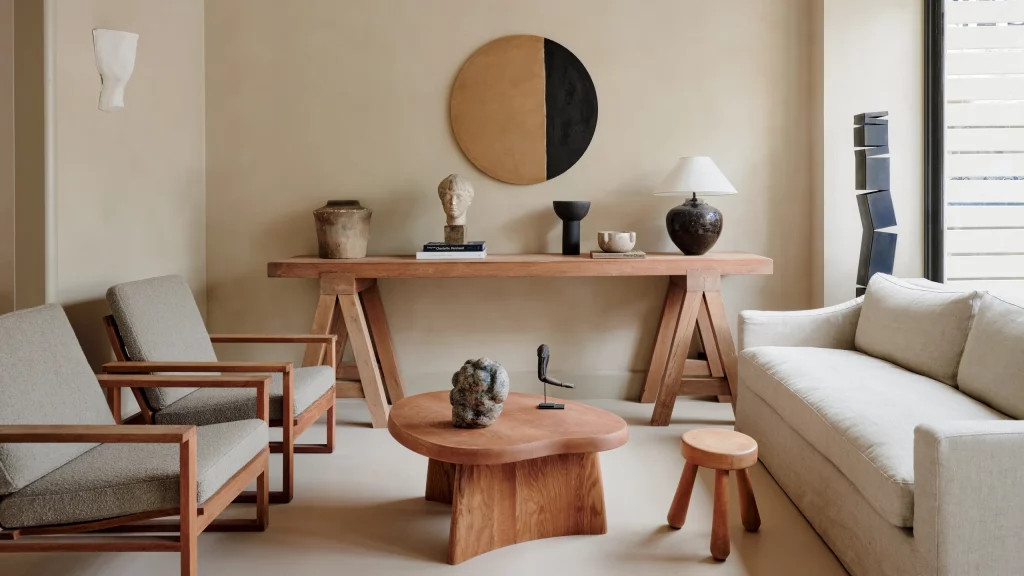The Controversy of “Sad Beige” and the Reign of Minimalism in Home Decor

In the realm of home decor, there’s a brewing controversy over what some disdainfully call “sad beige.” This term refers to the pervasive use of neutral tones like cream, gray, and off-white in interior design, particularly in residential spaces. While proponents argue for the timeless elegance and versatility of such colors, critics contend that this trend has gone too far, resulting in bland, uninspired living environments that lack personality and warmth.
Origins of Sad Beige: A Cultural Shift in Home Decor
The rise of sad beige can be traced back to several cultural and economic factors. One of the driving forces behind this trend is the popularity of minimalism, a design philosophy that emphasizes simplicity, functionality, and clean lines. Minimalist aesthetics prioritize neutral colors and uncluttered spaces, making them appealing to those seeking a sense of calm and order in their homes.
Additionally, the prevalence of online platforms like Airbnb has contributed to the rise of sad beige. Many property owners and hosts opt for neutral decor to appeal to a broad audience of potential guests. Neutral tones are seen as universally appealing and non-threatening, making them ideal for creating a neutral backdrop that won’t clash with guests’ personal tastes.
Critiques of Sad Beige: Pushback Against Homogenization
Despite its popularity, sad beige has garnered its fair share of criticism. Some argue that the overuse of neutral tones results in spaces that lack character and individuality. In their quest for universality, proponents of sad beige sacrifice creativity and originality, creating cookie-cutter interiors that lack soul.
Critics also point out the socioeconomic implications of sad beige. The prevalence of neutral decor in rental properties and speculative real estate ventures has led to accusations of gentrification and homogenization. By prioritizing mass appeal over cultural authenticity, sad beige perpetuates a bland, sanitized version of urban living that caters to the tastes of the privileged few.
The Rise of Minimalism: From Aesthetic Trend to Cultural Phenomenon
Minimalism has evolved from a niche design trend to a cultural phenomenon with far-reaching implications. Its influence can be seen in various aspects of contemporary life, from fashion and architecture to technology and consumer behavior.
At its core, minimalism is about stripping away excess and focusing on the essentials. It’s a rejection of consumerism and materialism in favor of simplicity and mindfulness. By embracing minimalism, individuals seek to free themselves from the burden of possessions and find fulfillment in experiences rather than things.
The Allure of Minimalism: Why We’re Drawn to Sad Beige
Despite its critics, sad beige continues to hold sway in the world of interior design. Its appeal lies in its understated elegance and versatility, making it a popular choice for homeowners and designers alike.
One of the key attractions of sad beige is its ability to create a sense of calm and serenity in the home. Neutral tones are soothing to the eye and can help create a peaceful and harmonious living environment. Additionally, sad beige serves as a blank canvas for personalization, allowing homeowners to add pops of color and texture to suit their individual tastes.
The Future of Sad Beige: A Shift Towards Authenticity and Diversity
While sad beige may currently dominate the world of interior design, there are signs that tastes are starting to shift. As more people seek authenticity and diversity in their living spaces, there’s a growing interest in embracing bold colors, eclectic patterns, and unique textures.
Designers and homeowners alike are increasingly drawn to spaces that reflect their personalities and passions. Instead of conforming to cookie-cutter aesthetics, they’re opting for interiors that tell a story and evoke emotion. This shift towards authenticity and diversity promises to inject new life into the world of interior design, challenging the dominance of sad beige and ushering in a new era of creativity and self-expression.
